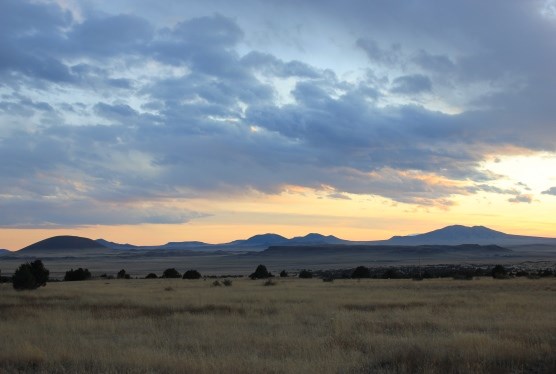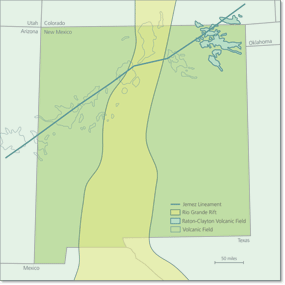
NPS L. Cartmell 
NPS A. Buccanero Capulin Volcano blanketed 15.7 square miles with its lava flows, but it was not the only volcano to transform the New Mexico landscape. Capulin lies within the 8,000 square mile Raton-Clayton Volcanic Field (RCVF). Along with Capulin, there are many volcanic features including multiple cinder cones, domes, tuff rings, and the immense andesite-shield volcano, Sierra Grande. Volcanic fields are regions of volcanic activity that tap one magma source. Eruptions in the RCVF began approximately 9 million years ago, with Capulin's eruption taking place between 56,000 and 62,000 years ago. Potential still exists for future eruptions from dormant volcanoes in the field today. Capulin Volcano, like many cinder cones, had only one eruptive period and is now considered extinct. Volcanic fields stretch across New Mexico, yet their cause is not completely understood. Most volcanic activity in the world occurs at plate boundaries below the earth's surface, along the Pacific Ring of Fire for example, or over hot spots like the Hawaiian Islands. Located on the interior of the North American plate, far from any plate boundaries, the explanation for volcanic activity in New Mexico becomes more complex. One possible reason for the volcanic fields of New Mexico is continental rift, the pulling apart of a single plate below the earth's crust. The Rio Grande Rift is an elongated valley of rifting that extends in a north-south direction from Colorado to central Mexico. Crossing the Rio Grande Rift is the Jemez Lineament, a northeast-running line of volcanic features, which could act as an outlet for rising magma as the Rio Grande Rift stretches the plate below apart. |
Last updated: April 20, 2020
